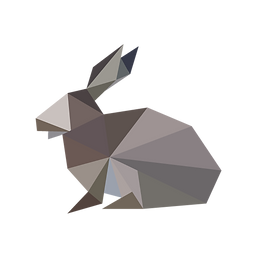Dilworth S.T.E.M. Academy
Washoe County School District.


Seventh Grade Project One How Disease Affects The Body.
For this unit, students are given the situation of being in charge of informing their community about common diseases and how they affect us both physically and financially. This included researching various bodily systems and the diseases that affected them as well as completing a cost analysis based on different insurance and treatment options.
Local health professionals and community leaders
were invited to take part in the project by providing support and a meaningful audience. Family members of students were
also invited to observe the final product presentations.
Project Summary

Connections to 21st Century Learning
Collaboration-
Students are required to work in peer groups with shared responsibilites. The way in which this is done varies between groups. Students are given freedom as to how they cover all the body systems and their relationships. Even though students have individual duties, all of the project's important decisions are made as a group. Students' final product is interdependant and students are not only assessed as a group, but graded on their ability to work as a team.
Knowledge Construction-
Students engage in activities that guide them to construct the knowledge necessary to successfully complete their projects. Students must apply this new knowledge to create the materials they will need for their project. Throughout the two week period, teachers across all content areas are providing student-centered lessons at were especially designed to be interdisciplinary.
Real World Problem Solving-
The main purpose of the project is for students to solve a significant problem that they can create a relevant solution to. The project is based on the problem that the public is poorly informed on the body's systems and how disease can affect you. Students are asked to create entertaining presentations based on what they learned that will inform their community on this topic.
Use of Technology for Learning-
Students use various types of technology as they gather information to complete their projects. Students are able to get an understanding of the body systems like never before through the use of digital simulations and the abundant video resources available. If students use a technological format for their final product, they are reaching the highest level of this competency.
Self Regulation-
Students are given an entry letter and rubric to define the learning goals and success criteria of the project. Students meet as a group to plan how they are going to utilize their time over the course of the two-week period. Every day students monitor their own progress based on the daily goals, then review their work to see what still needs to be accomplished. Group members and teachers provide feedback so that any necessary revisions can be made.
Skilled Communication-
Students are using multiple methods of communication to convey their message in their final presentations. It is composed of a set of connected ideas based on the evidence that was collected throughout the project. Information is presented with rich visual supports and is logically organized to provide a coherent message to the target audience.
Seventh Grade Project Two Improving Public Spaces.
Project Summary
This project challenges students to improve a local park of their choosing. Their goal is to enhance the park so that it is a more positive part of the community and native ecosystem. To meet this goal, students must research current park layouts and flora as well as possible community needs that could be provided by new public space. Students conduct field studies to give them a hands on sense of the environment and create scale models of their innovative designs.
As a final culmination, selections of students are given the opportunity to present their designs to city planners at the Parks and Recreation Department.



Connections to 21st Century Learning
Collaboration-
For this project, students work individually on specific parts of the park and its design, but then work in a group to develop the overall park and accompanying presentation. Students decide who is responsible for what based on individual talents so that the best of the group is assessed.
Knowledge Construction-
Students engage in activities that guide them to construct the knowledge neccessary to successfully complete their projects. Students must apply this new knowledge to create the materials they will need for their project. Throughout the two week period, teachers across all content areas are providing student-centered lessons at were especially designed to be interdisciplinary.
Real World Problem Solving-
Students are working to support their community in a real way. The project is based on the problem that the their local parks are in need of improvement. As a group, the students work to change the world around them by creating an appealing, nature-friendly public space.
Use of Technology for Learning-
Students use various types of technology as they gather information to complete their projects. Students use scientific instruments to test various elements from their surrounding to help better understand the world around them. Other research must be done using the internet to ensure that their date is the most up-to-date. Students who develop a computer rendering or blueprint of their new design are optimizing their use of technology for learning.
Self Regulation-
For this project, students are given time daily to meet with their groups and provide peer feedback on work completed. Students are given an entry letter and rubric to define the learning goals and success criteria of the project. Teachers also provide feedback on individual contributions during instructional times to give supplemental support.
Skilled Communication-
Students are using multiple methods of communication to convey their message in their final presentations. It is composed of a set of connected ideas based on the evidence that was collected throughout the project. Information is presented with rich visual supports and is logically organized to provide a coherent message to the target audience.
